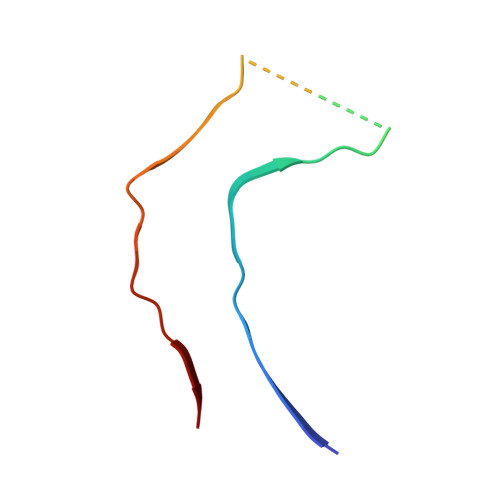Heparin-induced tau filaments are polymorphic and differ from those in Alzheimer's and Pick's diseases.
Zhang, W., Falcon, B., Murzin, A.G., Fan, J., Crowther, R.A., Goedert, M., Scheres, S.H.(2019) Elife 8
- PubMed: 30720432
- DOI: https://doi.org/10.7554/eLife.43584
- Primary Citation of Related Structures:
6QJH, 6QJM, 6QJP, 6QJQ - PubMed Abstract:
Assembly of microtubule-associated protein tau into filamentous inclusions underlies a range of neurodegenerative diseases. Tau filaments adopt different conformations in Alzheimer's and Pick's diseases. Here, we used cryo- and immuno- electron microscopy to characterise filaments that were assembled from recombinant full-length human tau with four (2N4R) or three (2N3R) microtubule-binding repeats in the presence of heparin. 2N4R tau assembles into multiple types of filaments, and the structures of three types reveal similar 'kinked hairpin' folds, in which the second and third repeats pack against each other. 2N3R tau filaments are structurally homogeneous, and adopt a dimeric core, where the third repeats of two tau molecules pack in a parallel manner. The heparin-induced tau filaments differ from those of Alzheimer's or Pick's disease, which have larger cores with different repeat compositions. Our results illustrate the structural versatility of amyloid filaments, and raise questions about the relevance of in vitro assembly.
Organizational Affiliation:
MRC Laboratory of Molecular Biology, Cambridge, United Kingdom.














